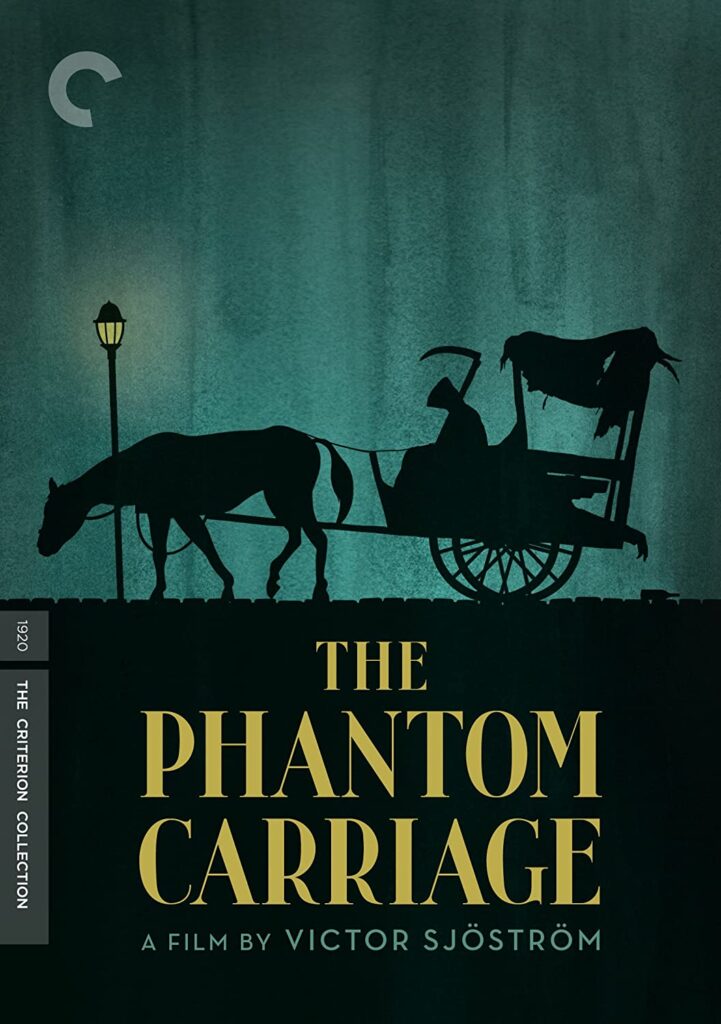
I don’t spend much time watching silent films, especially foreign silent films, but The Phantom Carriage has me rethinking that stance. Made over 90 years ago by Swedish master Victor Sjostrom, the film is just as relevant and striking today as it must have been for the film-goers of its time. It’s quite easy to see how Sjostrom became a major influence on Swedish great Ingmar Bergman, with the devotion going so deep that Bergman featured Sjostrom as an actor in his films, most notably in Wild Strawberries.
As the film opens, we meet the young Sister Edit of the Salvation Army, a selfless and kind-hearted individual on her death bed after contracting tuberculosis. Her last wish is to see a man named David Holm (Sjostrom), a reprobate she has been attempting to rescue for the past year. We soon learn that Holm is a drunk and completely happy with his lot in life, having spurned every attempt Edit made to help him. He’s also a family man, although he pays far more attention to the bottle and his friends than his long-suffering wife and small children.
Holm and his drinking buddies are whiling away the hours in the local cemetery when one of them recounts the tale of the phantom carriage, basically the grim reaper’s mode of transportation as he collects departed souls. It’s said that the driver is the last person to die on New Year’s Eve, forced to spend the next year collecting souls until he is relieved by his successor. Guess what? It’s New Year’s Eve. And right on cue, Holm gets the notice that Sister Edit wants to see him, blows it off, then gets attacked and accidentally killed by his friends while they try to convince him to grant her last wish.
Enter the phantom carriage. And what an entry it is. Using double exposure, Sjostrom produced some astounding effects for the era that made Holm and the carriage appear ghostly, even when interacting with humans. Holm’s spirit rises right out of his body, the carriage floats over the countryside including water, and even the carriage horse is spookily bony. The carriage driver decides to take Holm on a ride through the past, basically something like A Christmas Carol, letting Holm see firsthand the role he had in ruining the lives of Edit and his family. How can a dead man make amends? Surprisingly, Sjostrom finds a way to deliver a happy ending, and one that still carries tremendous impact.
Sjostrom made interesting use of hand coloring in the film, with all external night scenes tinted blue, day scenes tinted red, and internal scenes tinted yellow. It’s probably an unnecessary touch in the grand scheme of things, but further shows that even in the early days of cinema there were intriguing attempts at enhancing the viewing experience via effects.
The Criterion release includes two music soundtracks: a lively chamber orchestra that matches the proceedings perfectly, along with a modern take by experimental duo KTL that was mostly just droning guitar feedback and reverb whenever I sampled it. The image quality is surprisingly consistent throughout the film considering that the restored print was pieced together from two entirely different sources. There are still scratches aplenty, but overall the image is exceptional and well worth experiencing on Blu-ray to wring out all possible details.
Special features include an interview with Bergman expressing his admiration for Sjostrom, a featurette exploring Sjostrom’s influences on Bergman’s films, along with a brief film montage of the construction of the massive Swedish studio where this inaugural film was made.
The Phantom Carriage is available on Criterion Blu-ray and DVD on Tuesday, September 27th. For more information, visit the Criterion website.